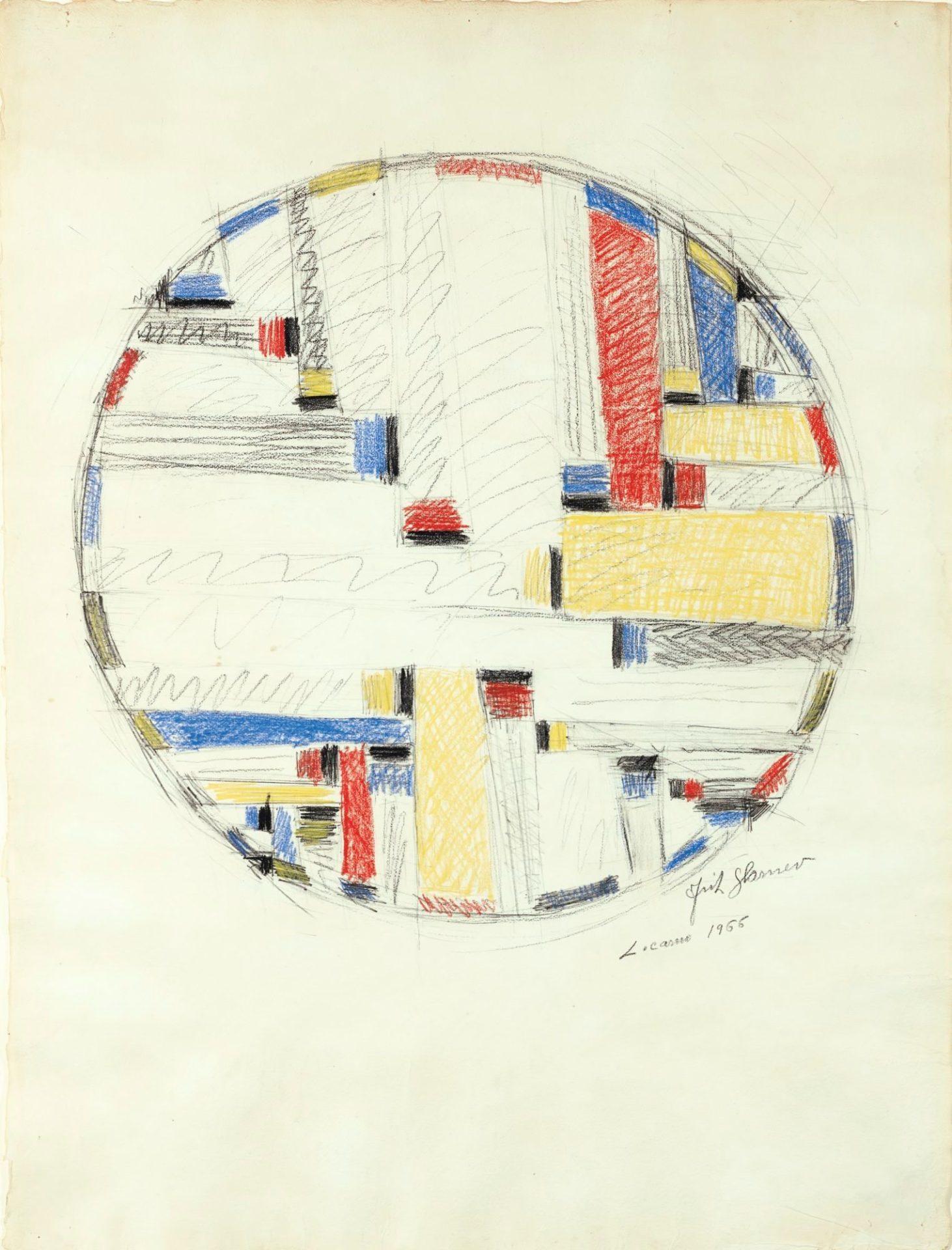Biography
Fritz Glarner was a Swiss-American painter.
Glarner began his artistic education in 1914, when he studied painting at the “Regio Istituto di Belle Arti” in Naples. He himself worked as a drawing teacher in Sarno from 1917. In 1923 he moved to Paris and continued his artistic training at the Académie Colarossi from 1924 to 1926. In Paris, Glarner began to establish connections with the representatives of the artistic avant-garde.
In 1928 he married the American Louise Wonsky Powell and undertook a study trip to the USA with her from 1930 to 1931, where he made his first contacts with collectors and artists, especially with Piet Mondrian and other representatives of the De Stijl group. Piet Mondrian had a great influence on Glarner’s artistic work. In 1933 Glarner joined the group Abstraction-Création in Paris. He exhibited several times together with other artists of this group.
In 1935 Glarner lived in Zurich for a short time. In 1936 he emigrated with his wife to New York and became a US citizen in 1944.
Glarner was one of the leading representatives of Abstract Expressionism and is counted among the so-called Zurich Concrete artists. The artistic roots of this movement lie, in addition to his relationship with De Stijl, in the principles of the Bauhaus, where several artists had studied. Max Bill was also counted among the “Zurich Concrete”, and Glarner still maintained intensive contact with him despite his emigration to America. Other Zurich Concretists included Richard Paul Lohse, Verena Loewensberg and Camille Graeser.
In 1936 Glarner took part in the exhibition “Zeitprobleme in der Schweizer Malerei und Plastik” (Time Problems in Swiss Painting and Sculpture) at the Kunsthaus Zurich. In 1937 he joined the artists’ association allianz. In the USA, however, Glarner initially had to earn his living with portrait photography. He practised his painting in parallel. He was a member of the “AAA” (American Abstract Artists) from 1938 to 1944. He cultivated an intensive exchange of ideas with Piet Mondrian. In the 1940s Glarner found his own special “constructive-concrete” pictorial language. He called this pictorial concept “Relational Painting”.
In 1957 he moved with his apartment and studio to Huntington on Long Island. In New York, he had also produced large-scale murals, for example in 1958 in the lobby of the Time & Life Building and in 1961 in the Dag Hammarskjöld Library at the UN headquarters and in 1963-64 the “Rockefeller Dining Room” of Nelson Rockefeller’s New York City apartment. His painting was now internationally known. Glarner was a participant in documenta 1 in Kassel in 1955 and officially represented Switzerland at the Venice Biennale in 1964 and 1968.
After a serious accident in 1966, during his return journey to America on a ship, he could hardly practice his painting. Five years later, in 1971, Glarner returned to Switzerland with his wife.
He died one year later on 18 September 1972 in Locarno.

